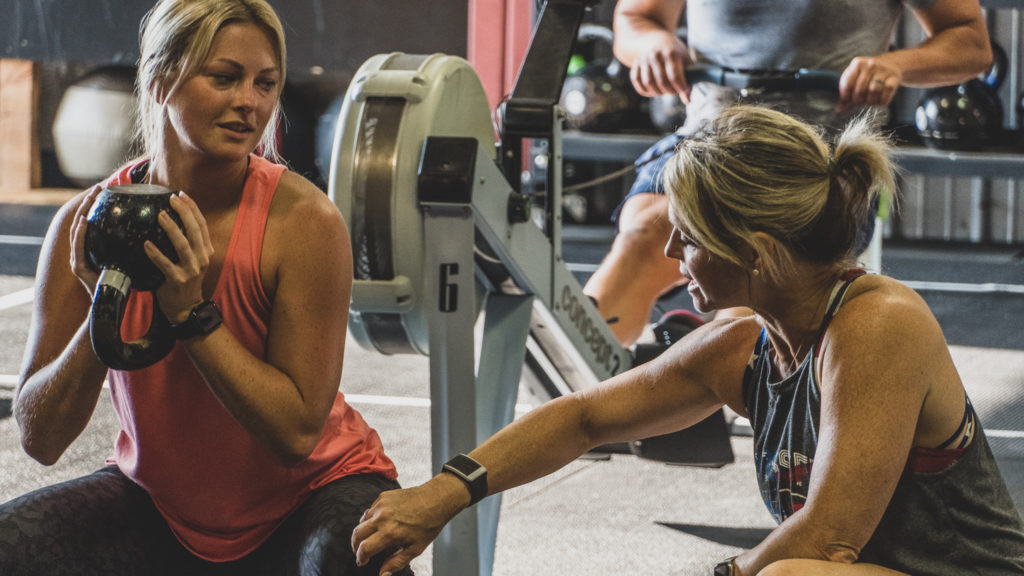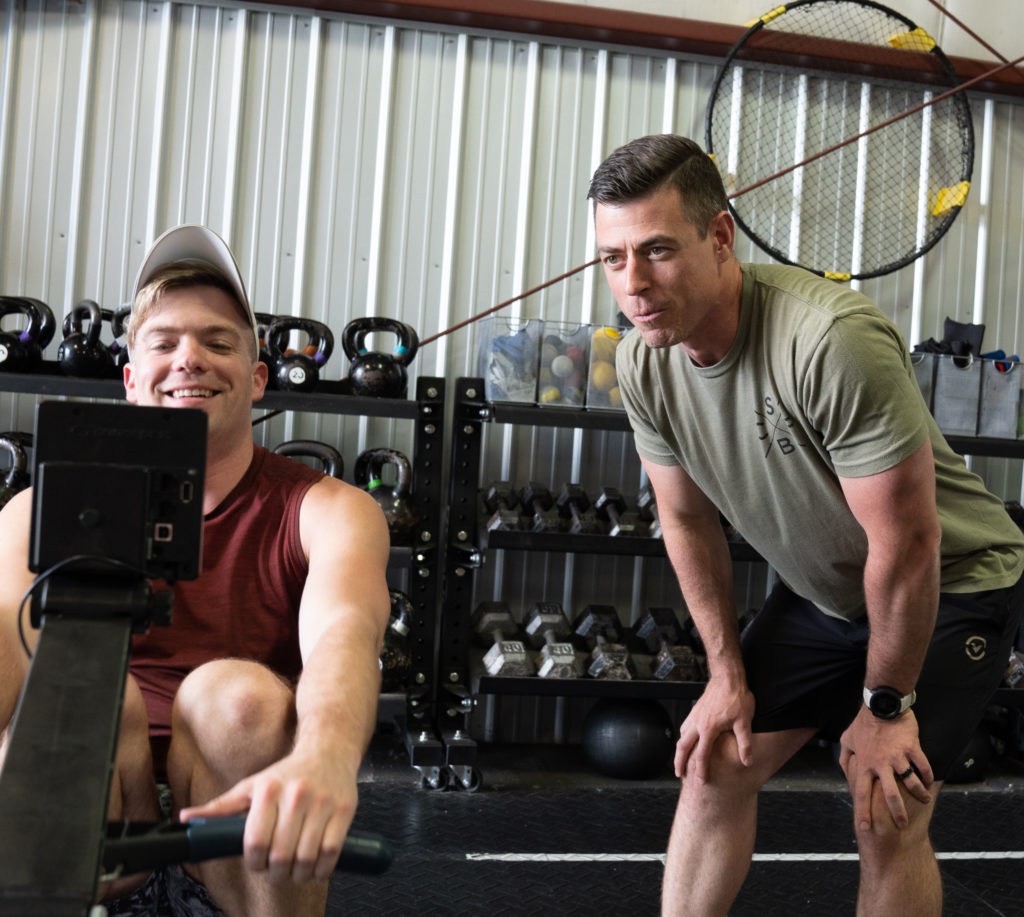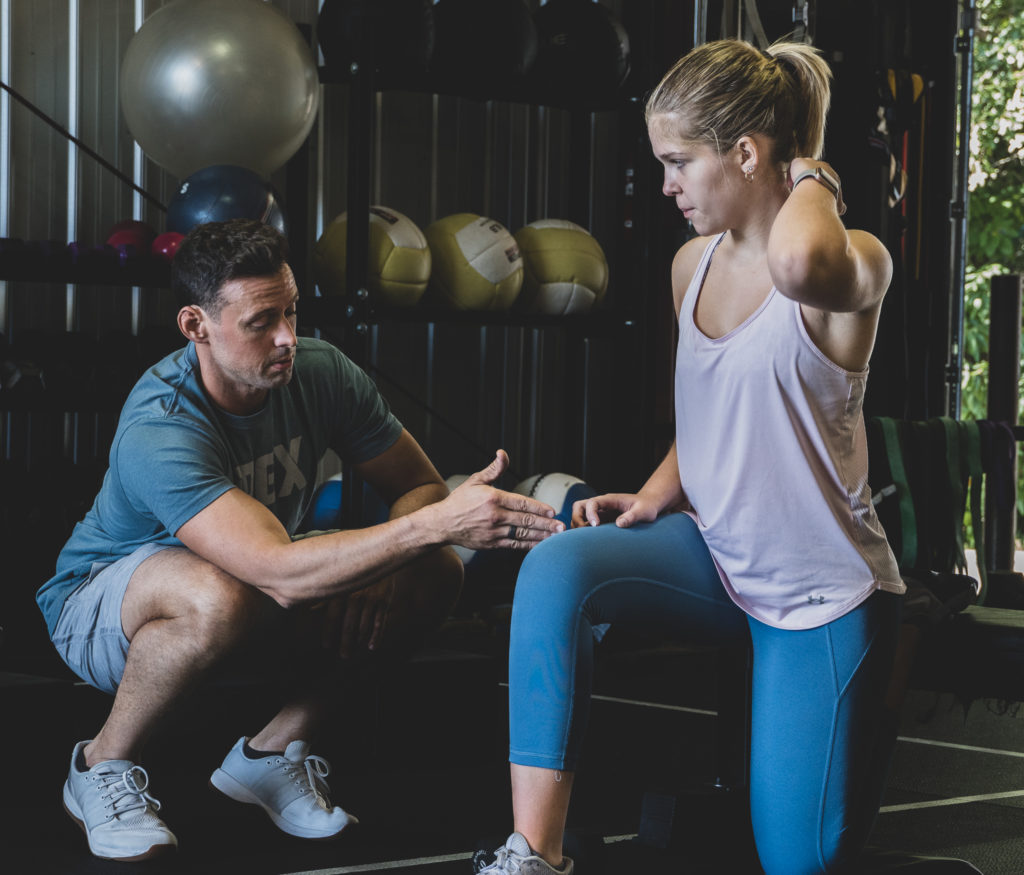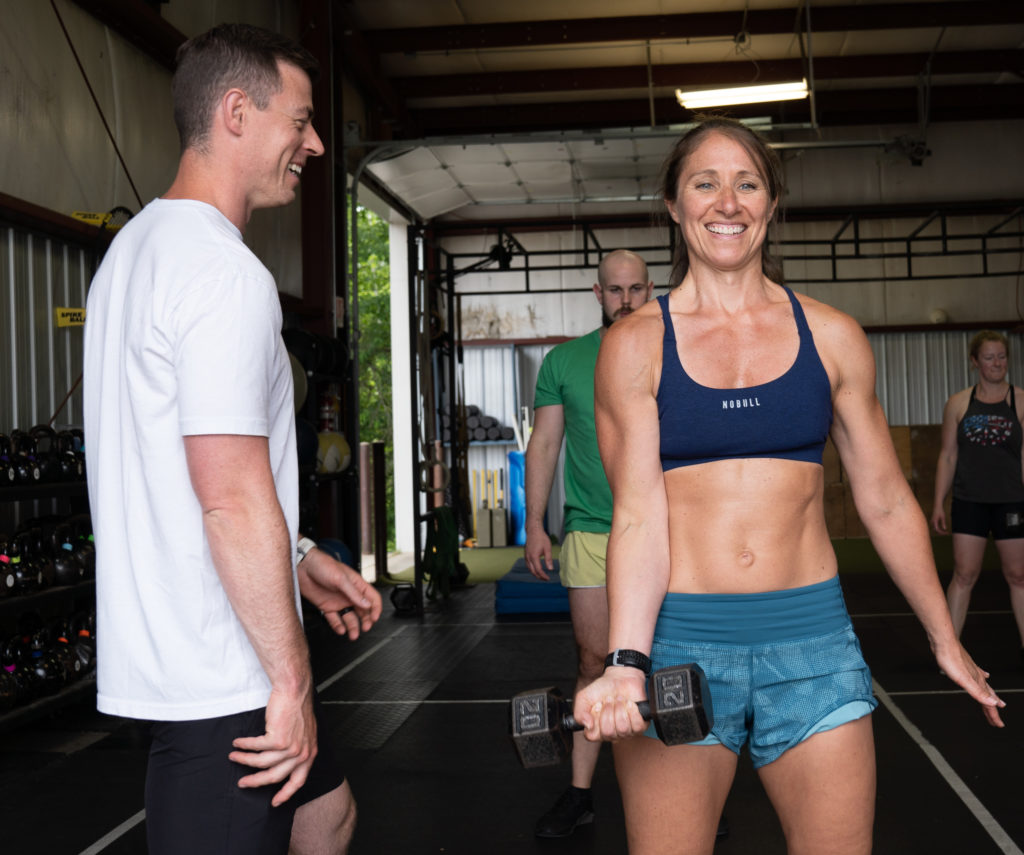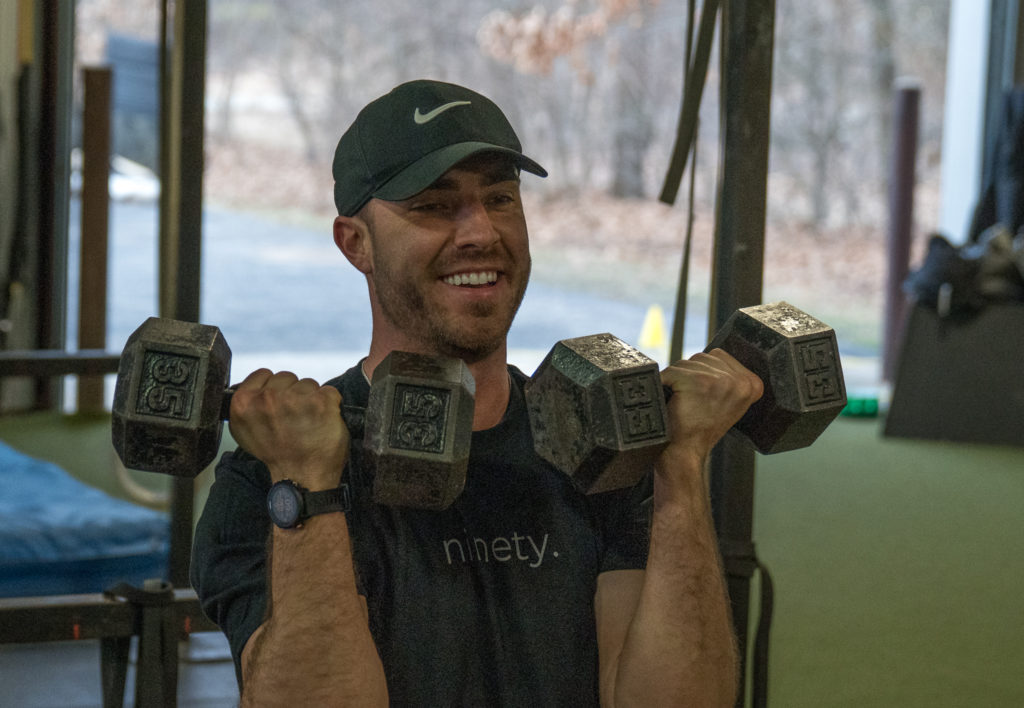How do I get Abs?!
When we say “get abs” it sounds like it is something we need to build or attain. However, the largest player in getting abs actually comes from reducing body fat – in particular belly fat.
Abs will be visible at different levels of body fat depending on the individual – and age and genetics do have a part to play in this. Although there is some nuance here, most of reducing body fat will come from honoring the basic lifestyle guidelines of getting enough quality sleep, adequate nutrition (food quality and food quantity), hydration (50% of bodyweight in ounces), and stress management (to balance cortisol). Training considerations can be thought of as the “cherry on top” once these are in place.
As for training, there are examples of specific cases where someone needs more work on their “abs/core” in the gym for them to show better. BUT, as stated above, this should be thought of as secondary to losing body fat. Doing more crunches and sit-ups without addressing the more impactful and foundational behaviors will most likely lead to frustration and no abs.
Is sunflower seed oil as bad for you as other “vegetable oils?”
A general rule of thumb for foods that are relatively new to the world – meaning they did not exist much more than a hundred years ago – is that they are guilty until proven innocent.
This is the case for industrial seed oils, including sunflower seed oil. In terms of how these oils impact health, here are a few things to consider:
- Vegetable oils have no single solitary micronutrient or other nutritional benefit one could get elsewhere.
- Omega 3:6 balance – we need a balance of both omega 3 fats and omega 6 fats, and these oils have larger amounts of pro-inflammatory omega 6 fats that can throw off the healthy balance that our body thrives on.
- Oxidation: Omega 6 fats break down when exposed to light, heat, and air – become “oxidized” – which can cause burden to the body.
Practical takeaway:
The easiest and best approach to reducing this issue is to cook with good oils at home (aim to cook mostly from home!) and minimize consumption of processed/refined foods as much as possible. Consuming occasional amounts of seed oil, at a Whole Foods hot bar for example, is most likely not an issue if you’re consuming most of your foods that were cooked in good oils.
What are good oils to consume regularly?
- Olive oil, avocado oil, ghee, butter, and macadamia nut (for cold uses) oils are your best bet. Palm oil (red palm oil in particular) are also good choices.
*As a note, if you are going to be using something like sunflower oil, use it for cold purposes (i.e. a salad topper), buy it “cold pressed” (to reduce oxidation), and ideally purchase high oleic sunflower oil, which is actually very similar to olive oil (has much less omega 6 fatty acids and is higher in mono-unsaturated fats like olive oil).
Does taking Apple Cider Vinegar (ACV) really help?
Does taking this help whom and for what purpose? Below are a few different scenarios in which ACV could be beneficial or detrimental for someone.
As far as benefits, ACV can support digestion and stomach acidity. It can also help with blood sugar response to foods – there is a compound called “acetic acid” that reduces blood sugar spikes from food.
As far as its potential determinants, ACV can cause flares-ups for individuals who are sensitive to Histamine, as it is very high in Histamines. In addition, because of its high acidity, ACV can negatively impact tooth enamel if you’re doing it too frequently and not through a straw.
So what’s the verdict? Although there is utility to using ACV, it is not a special potion that will solve all your problems. It’s also not a free pass to go and eat a whole box of cookies after a shot of ACV since it “helps with your blood-sugar response to food.” It’s great on salads and sauteed greens 🙂
What’s the verdict on Sucralose?
Half the health gurus out there say it will destroy your gut biome and cause every disease known to man the other half say 98% passes right through you and there are no negative health effects. What’s the real truth?!
Just like seed oils, this is another one that is guilty until proven innocent because of its relative recency of existence.
A few questions to help guide your thinking on these:
Are artificial sweeteners like Aspartame, Nutrasweet, and Sucralose necessary for health? No.
Are they beneficial for health? No. Name a single solitary micronutrient or other nutritional benefit one could get from them.
Moreso, animal studies seem to suggest issues with glucose intolerance, weight gain, and blood sugar issues with regards to artificial sweetener consumption. So if we were to weigh the evidence, this substance doesn’t have much going for it as far as contributing to health.
Practical Takeaway
here are two different contexts that paint a picture of artificial sweetener use and how it could fit into one’s food profile:
For someone who is eating real whole food 80-90% of the time and has most of their other lifestyle ducks in a row and chooses to have an occasional (once a week to once a month rendezvous with Aspartame, Sucralose, or Nutrasweet), this will most likely NOT be a big deal.
On the contrary, however, for someone with poor food habits and lifestyle habits and is having a couple packets of Nutrasweet a day, that’s probably NOT helping things – in fact – it is more than likely harming things.
Carb Questions
Sweet Potato vs. White Potato – which is better?
Sweet Potatoes and White Potatoes actually have very similar nutrient profiles. Both are loaded with vitamins and minerals – more potassium than bananas!
The biggest difference between the two is that sweet Potatoes have more beta carotene, though beta carotene is not Vitamin A (retinol)
Practical takeaway:
Both are great carbohydrate sources. Consider buying white potatoes organic (these are highly sprayed – see Dirty Dozen and Clean 15 from the Environmental Working Group). If sensitive to nightshades, avoid white potatoes, since these are part of the nightshade family. Otherwise, enjoy them both to your liking 🙂
White Rice vs Brown Rice – which is better?
Raw brown rice does have more minerals than white rice, but less so when it is cooked. However, an important consideration is that most of the minerals of brown rice are bound to phytate, which is harder for humans to break down and utilize compared to other animals like rodents. You could soak and sprout the rice prior to cooking it to enhance the availability of these nutrients.
White rice, on the contrary, has been stripped of these phytates (along with the minerals), which may make it less problematic to digest for some.
Practical takeaway
eat based on preference and how well you digest these. You don’t “need” to eat either of these foods – you can get nutrients and carbohydrates from other sources.
Are oats okay for you or are they an anti nutrient?
Again, don’t think of foods in terms of right or wrong, good or bad, okay or anti-nutrient. There are subtleties and gradations with regards to food types and the individual.
Are oats necessary for health? No. Name a micronutrient you can get from oats that you can’t get elsewhere.
The main issues with oats are its phytate content and avenin (protein in the prolamin family like gluten), which can cause digestive and inflammatory issues for some. Soaking and fermenting will reduce these issues.
In addition, oats are often cross-contaminated with gluten in production and processing, which can cause issues with those who are sensitive to gluten. That being said, do oats produce as many issues as sandwich bread? No.
As far as some benefits of oats, they are a good source of soluble fiber. However, you can get soluble fiber elsewhere – from vegetables and other starches.
Practical Takeaway
Think of oats essentially as an alternative starch, for variety in one’s nutritional profile – if you enjoy oats and respond well to them. A great brand to purchase oats from is One Degree Farms, which you can find at Costco Wholesale.
What are our personal rankings of alternative milks in terms of health benefits and detriments?
The first thing to mention here is that any liquid food will tend to spike blood sugar.
The second thing to mention is what are you intending on using this for (and what amounts)?
We recommend simple alternative milks (be sure check for added sugar and ingredients):
1. Full-fat coconut milk from a can. Look for no guar – just coconut and wate.r
2. Unsweetened Almond milk with minimal additives.
That’s about it. As for oat milk, which has grown in popularity recently – we aren’t huge fans of this since it is 1. Highly concentrated (see oat considerations above) and 2. Since it is predominantly a starch, and liquid, and therefore this can spike blood sugar quite a bit.
Does grass-fed and organic really matter?
Again, it is important to consider the context – does it matter for what and for whom?
Here are some considerations:
- Are you eating real, whole foods 80-90% of the time, practicing good food hygiene (chewing your food in a relaxed state)? Real whole food is better than processed food. If you’re eating mostly processed foods, start here.
- Budget concerns. Organic and grass-fed is more expensive than conventional beef. Again, beef is better than hot dogs.
- Environmental concerns, ethical concerns, and farmer’s welfare. Organic and grass-fed/finished beef is better for the environment and the animal.
- Health concerns. Organic and grass-fed/finished beef is higher in nutrients and it has fewer toxins than conventional beef.
Practical take-away.
Start with whole, single-ingredient foods. If your budget allows and you want to choose organic, grass-fed/finished – we think that is a great option that will support your health.
What is fasted cardio and does it aid in fat burning?
First, let’s define fasted cardio. “Fasted” could mean not consuming foods overnight, for 12 hours, or 24 hours. Longer-term fasts are usually 36+ hours. For this conversation, we’re talking about waking up and not having eaten since dinner the night before, and going to exercise prior to consuming any foods. Some benefits of fasting include mental acuity and lower stress load and inflammation through giving the digestive system a break.
“Cardio” could mean fast aerobic intervals close to your threshold or it could mean easy, slow, long aerobic work, like going for a walk.
So, does it aid in fat burning?
Some research suggests yes, but most individuals I see that want to do this – they’re not hitting the basics that will actually make more of a dent in them losing body fat. This is like stepping over 100 bills to pick up nickels. Pick of the 100s first.
Why would you want to do fasted HIIT when you could walk fasted instead? We suggest walking for 30 minutes, or if you don’t have time for that, go for a 10 min post meal walk, in the sun. That’s 30 min a day of easy cardio or Non-exercise activity thermogenesis (NEAT) that will use energy. In addition, walking aids digestion plus the added benefit of sunshine and Vitamin D!
One last thing. The individual is also relevant when it comes to fasted exercise. Reflect on how you feel during exercise, what’s your energy like, how do you recover, and consider if you can keep repeating this over time – when you train fasted vs. with some fuel in your system.
How do you determine what type of diet is right for you?
We do recognize that identifying with a diet – ie.. paleo, keto, vegan, carnivore, macros – may give bumper lanes – clear guidelines – around what you can and cannot eat, which can help guide people towards adequate food quantity and/or quality.
Word-of-mouth of success stories such as “my aunt did keto and lost 30 pounds,” may also lead people to thinking that a certain diet is what they need to do to lose weight. However, it’s more than likely that 3 months go by and that person is back where they started. This is because they didn’t put the foundational nutrition habits and principles in place that will allow the person to maintain the results that they were looking for.
Using the term “Diet” implies a start and an end-point for most clients. But what do you do after you reach that endpoint? Where do you go from there? Unfortunately, this is usually back to their old ways.
What we think:
Why not create your own way of eating that is sustainable, the right quality and amounts that work for you? Something you can do forever, that supports great energy, mental acuity, libido, and your purpose.
Conclusion
All these nutrition questions are relevant to determining what an ideal food profile looks for you as an individual.
That being said, you must first “earn the right,” of nailing down the basics, BEFORE these nuanced methods become relevant to moving the needle in the direction of your goals. This is just like exercise – don’t worry about the knees-sleeves, wrist wraps, using bands/chains, or advanced training protocols when you’re just getting started. Instead, get in the gym consistently over the course of years – that will yield greater results.

